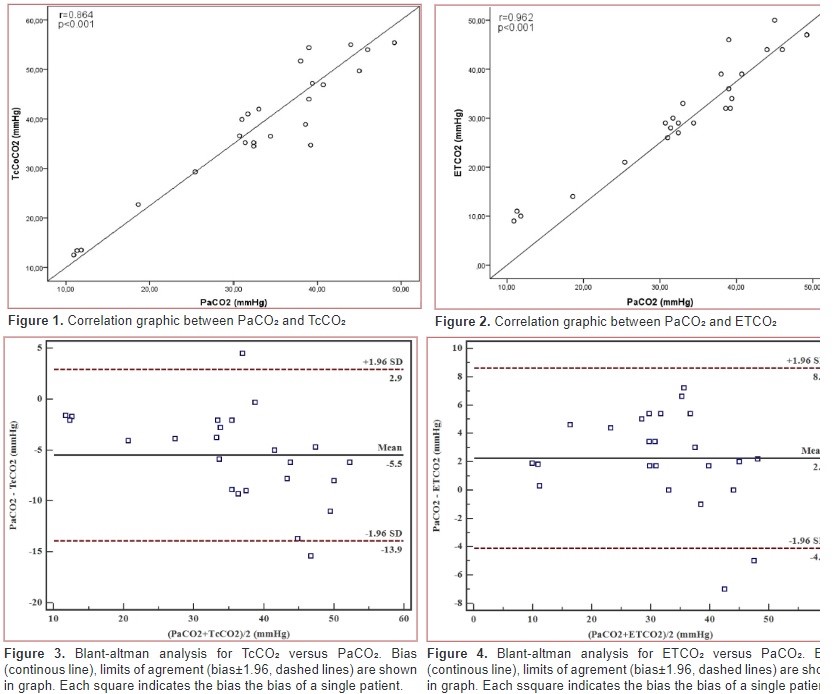Evaluation Of The Relationship Between Transcutaneous Carbondioxide Monitorization And End-tidal Carbondioxide And Partial Carbondioxide Monitorization
Transcutaneous Carbondioxide Monitorization in PICU
Keywords:
Transcutaneous carbondioxide, critically illAbstract
To evaluate the correlation of transcutaneous CO2(TcCO2) monitoring with PaCO₂ and ETCO2in mechanically ventilated patients in peditaric intensive care units. Single-center, prospective, observational cohort study. We enrolled 60 patients between the age of 1 month-18 years who were mechanically ventilated in pediatric intensive care unit for this single-center, prospective, observational cohort study from February 2019 through March 2019. Correlation analysis was performed for arterial PaCO2, end-tidal CO2, TcCO2parameters. P < 0.05 values were considered significant. The Bland-Altman plot was created for determining the agreement between the methods.The correlation of transcutaneous CO2and end-tidal CO2with arterial PaCO2was evaluated, both parameters were found to be positively and highly correlated (r=0.864, p<0.001, r:0.962, p<0.001, respectively). The mean bias between the arterial carbondioxide mesaurement and transcutaneous measurement was 5.5, and limits of agreement (bias ± 1.96 SD) ranged from -13.9 to 2.9. The mean bias between the arterial carbondioxide mesaurement and end-tidal carbondioxide measurement was 2.3, and limits of agreement (bias ± 1.96 SD) ranged from -4.1 to 8.6. In 44 measurements (88%), the TcCO2was ± 7.5 mm Hg of the PaCO2. TcCO2seems to be a good alternative for carbon dioxide measurement, as it is non-invasive and allows continuous monitoring in view of today's intensive care conditions, but arterial PaCO2measurement is still the gold standard method. Continuous TcCO2monitoring provides a promising alternative to repeated blood sampling in subjects requiring mechanical ventilation for critically ill children.









